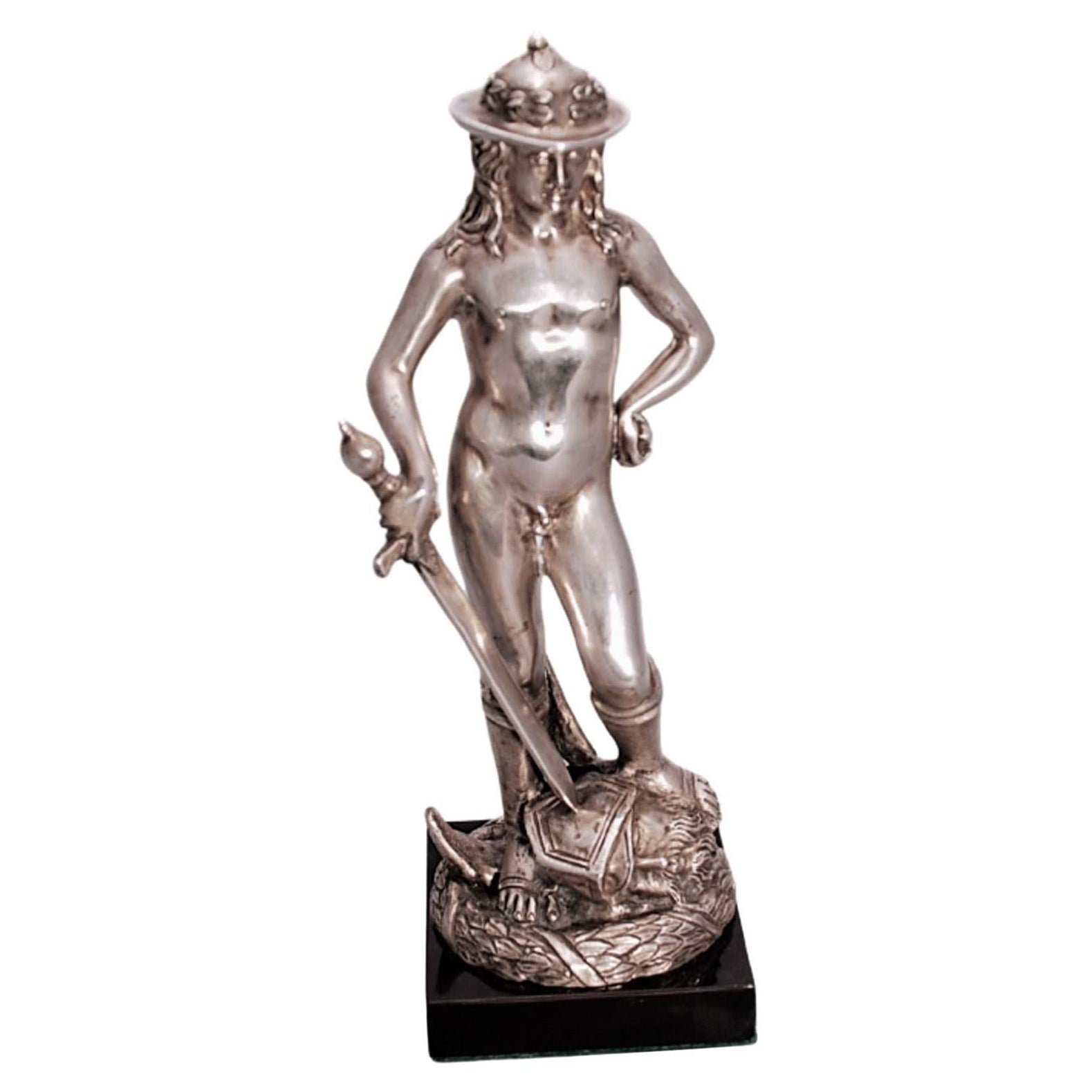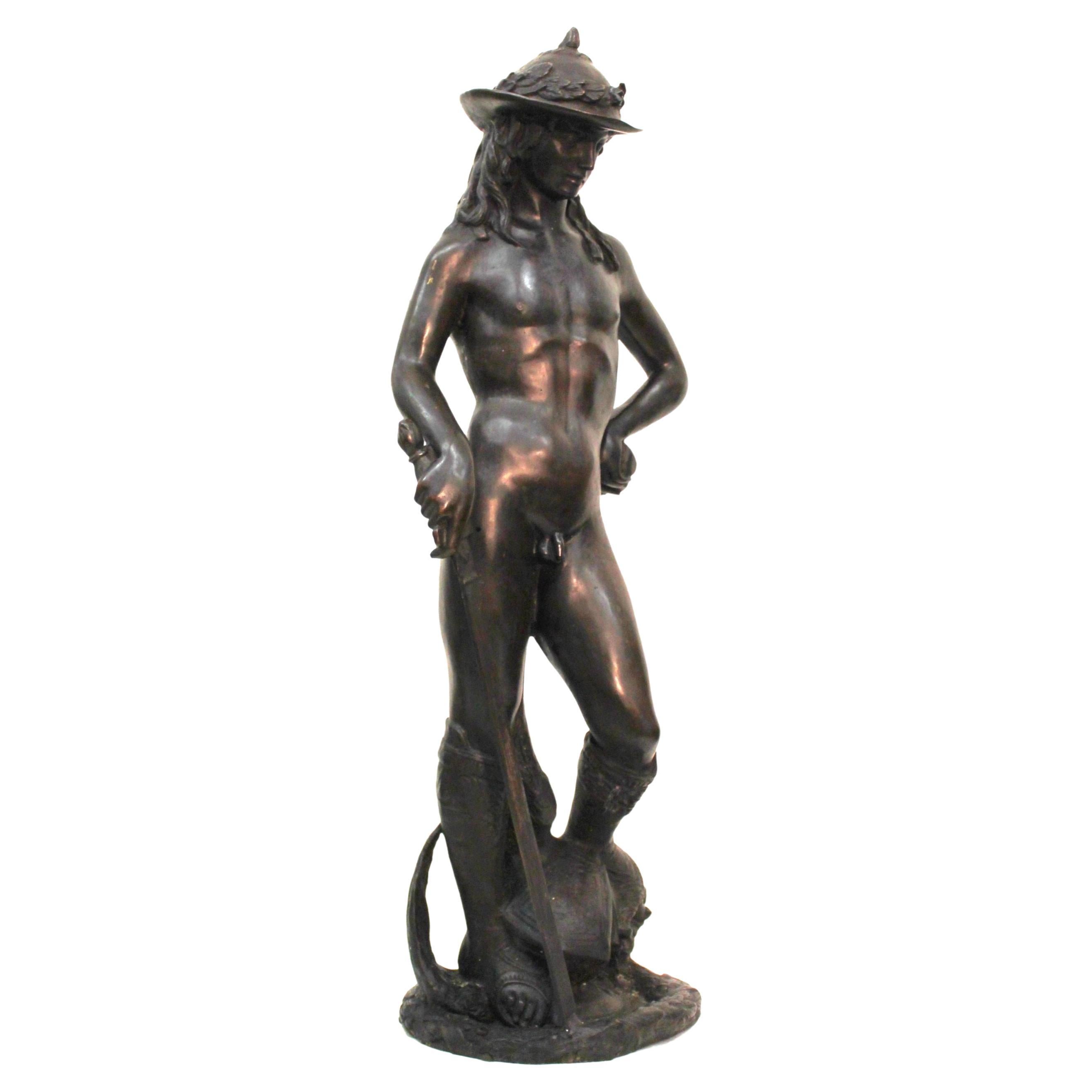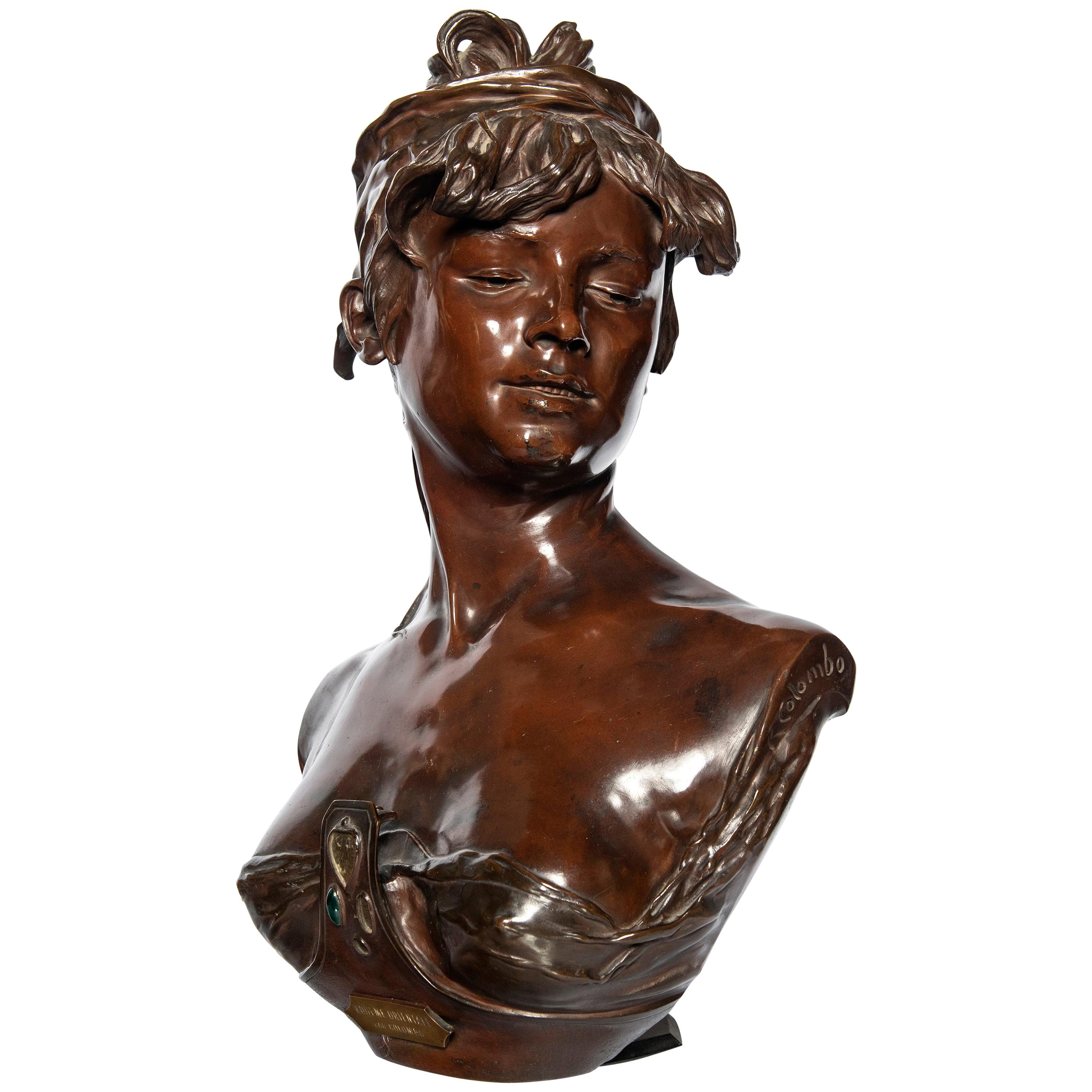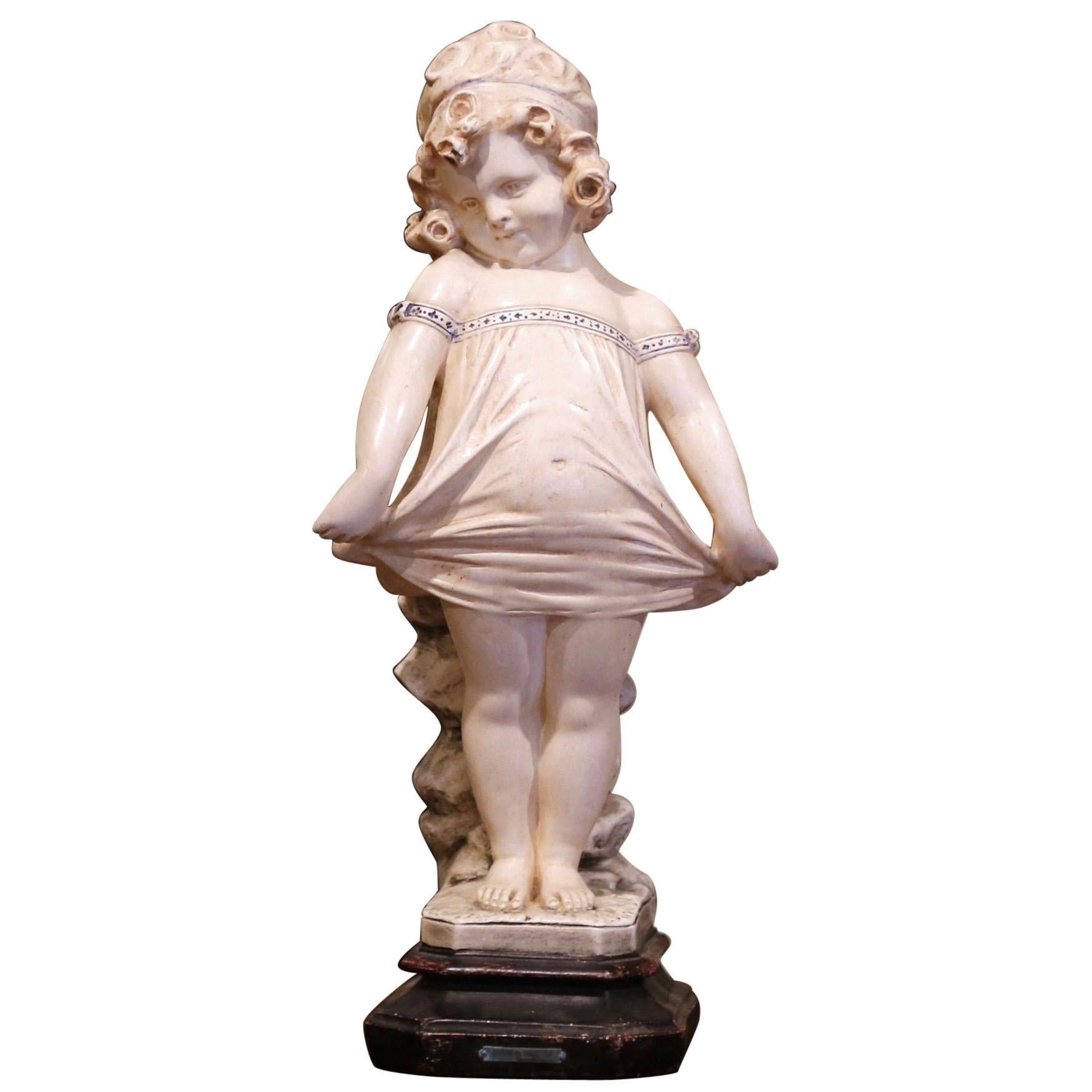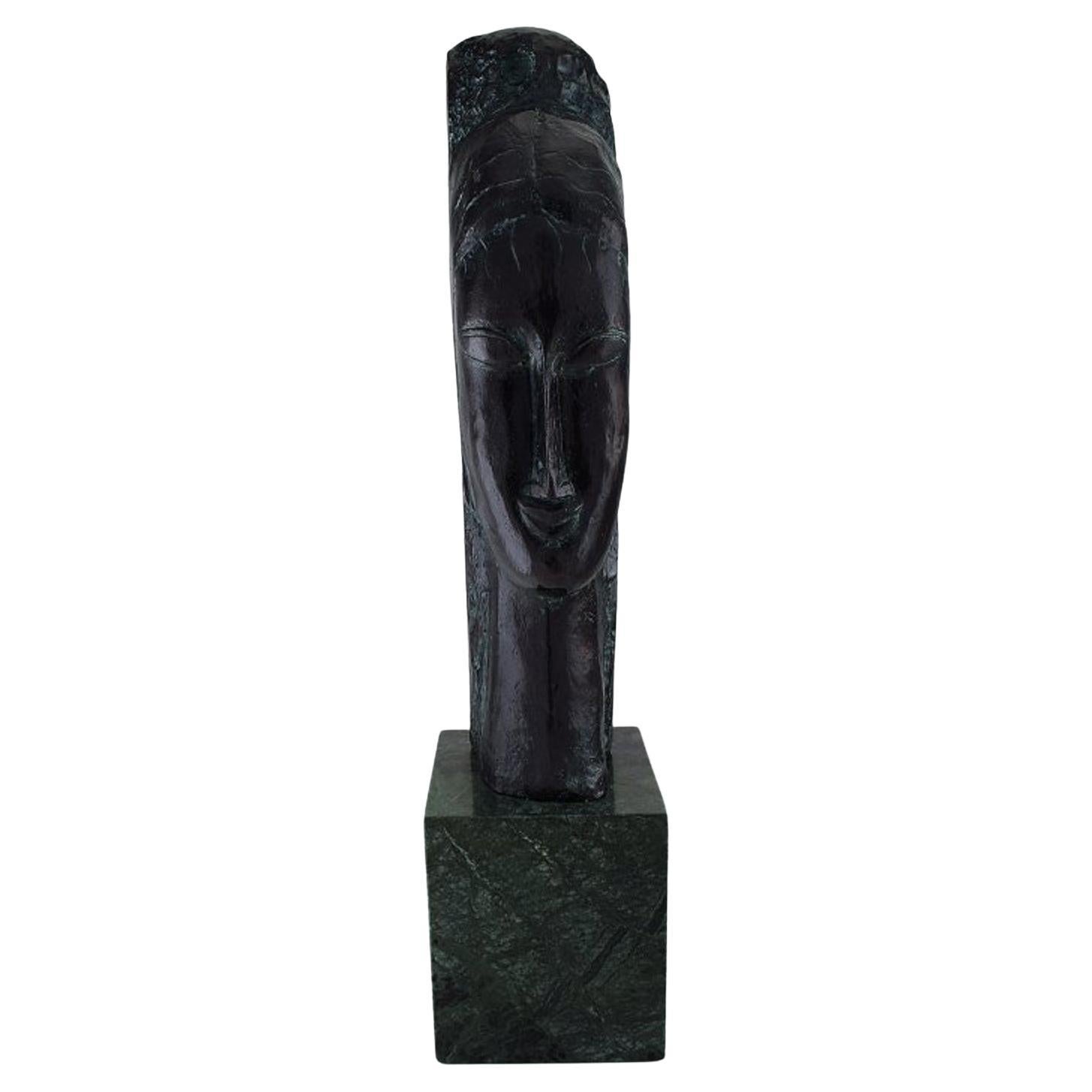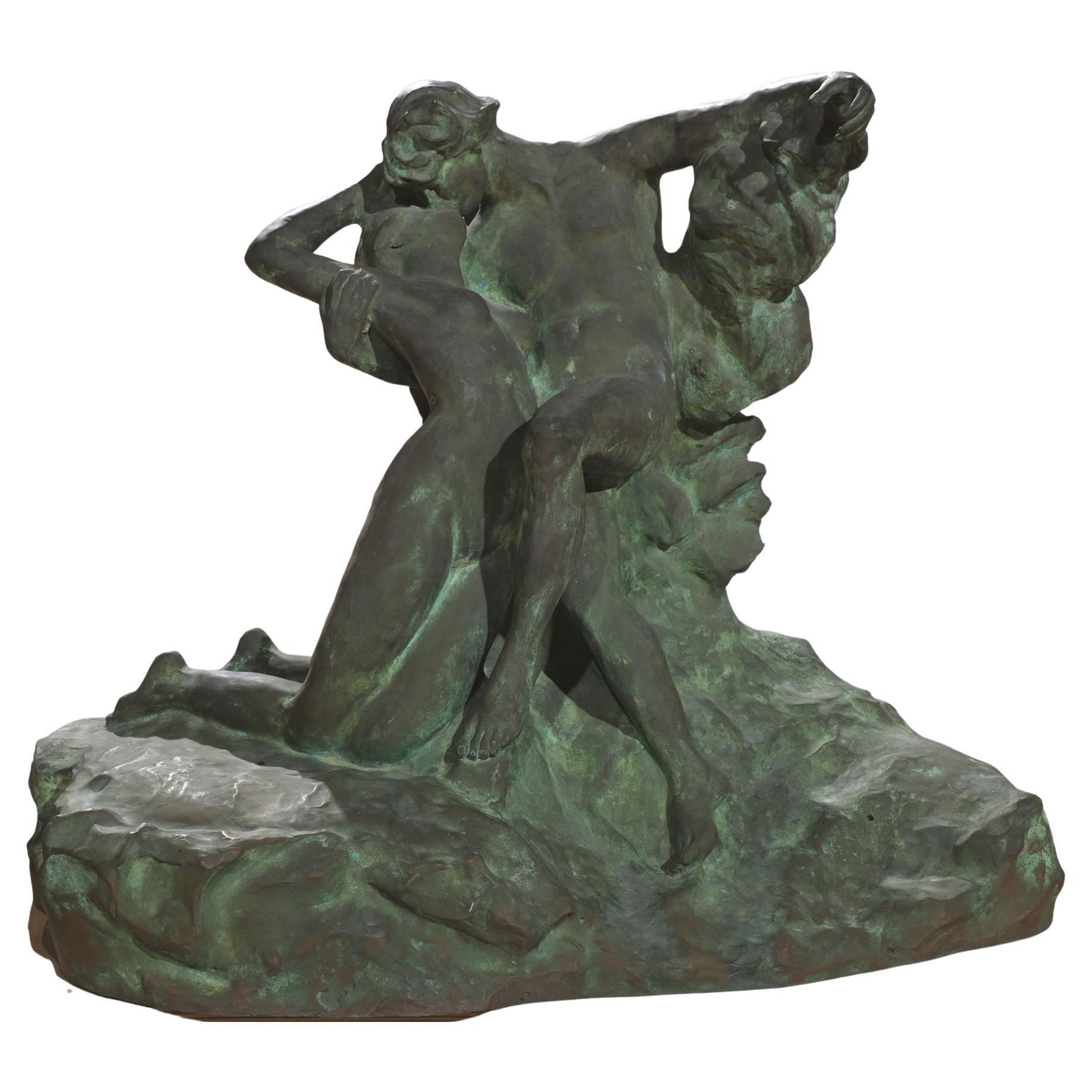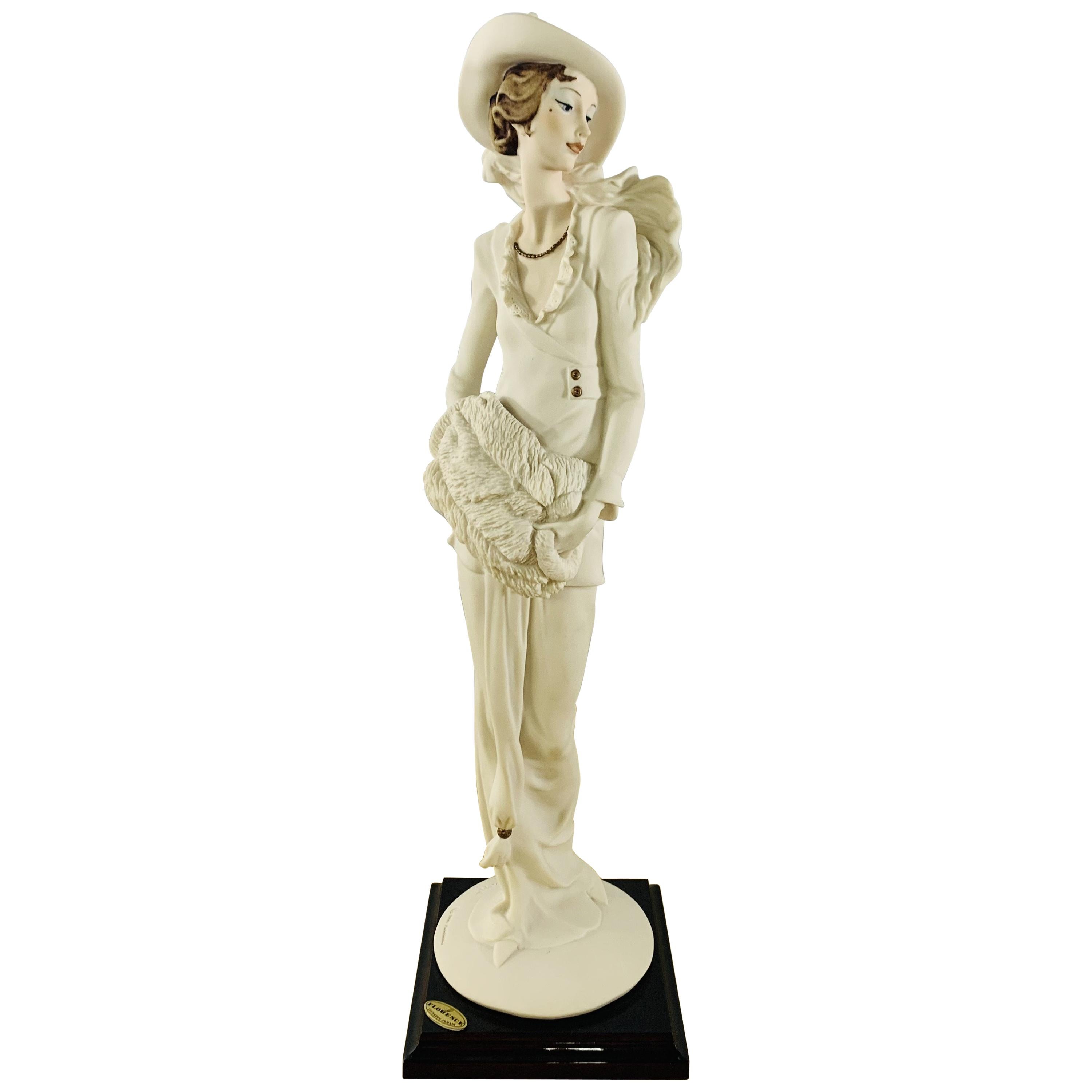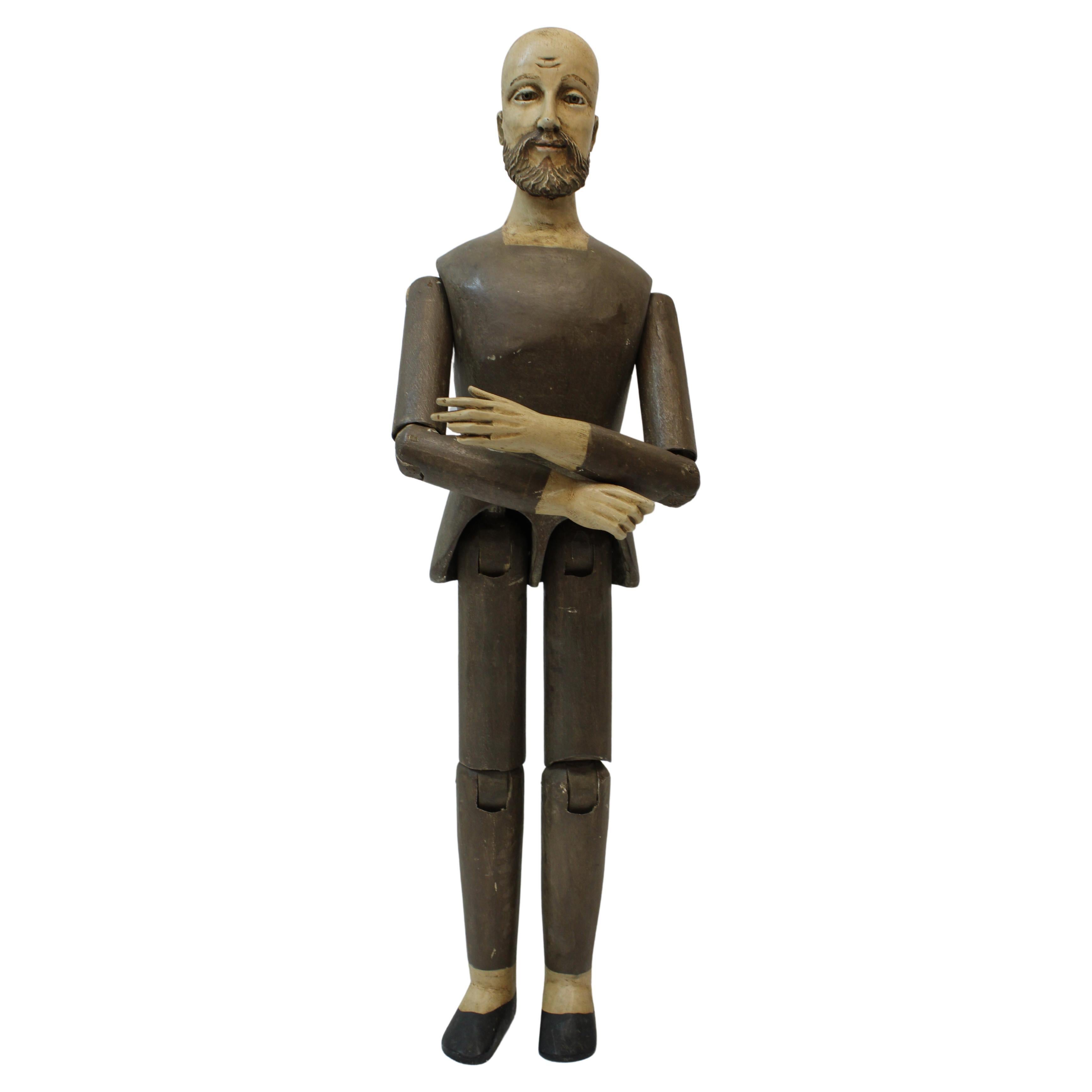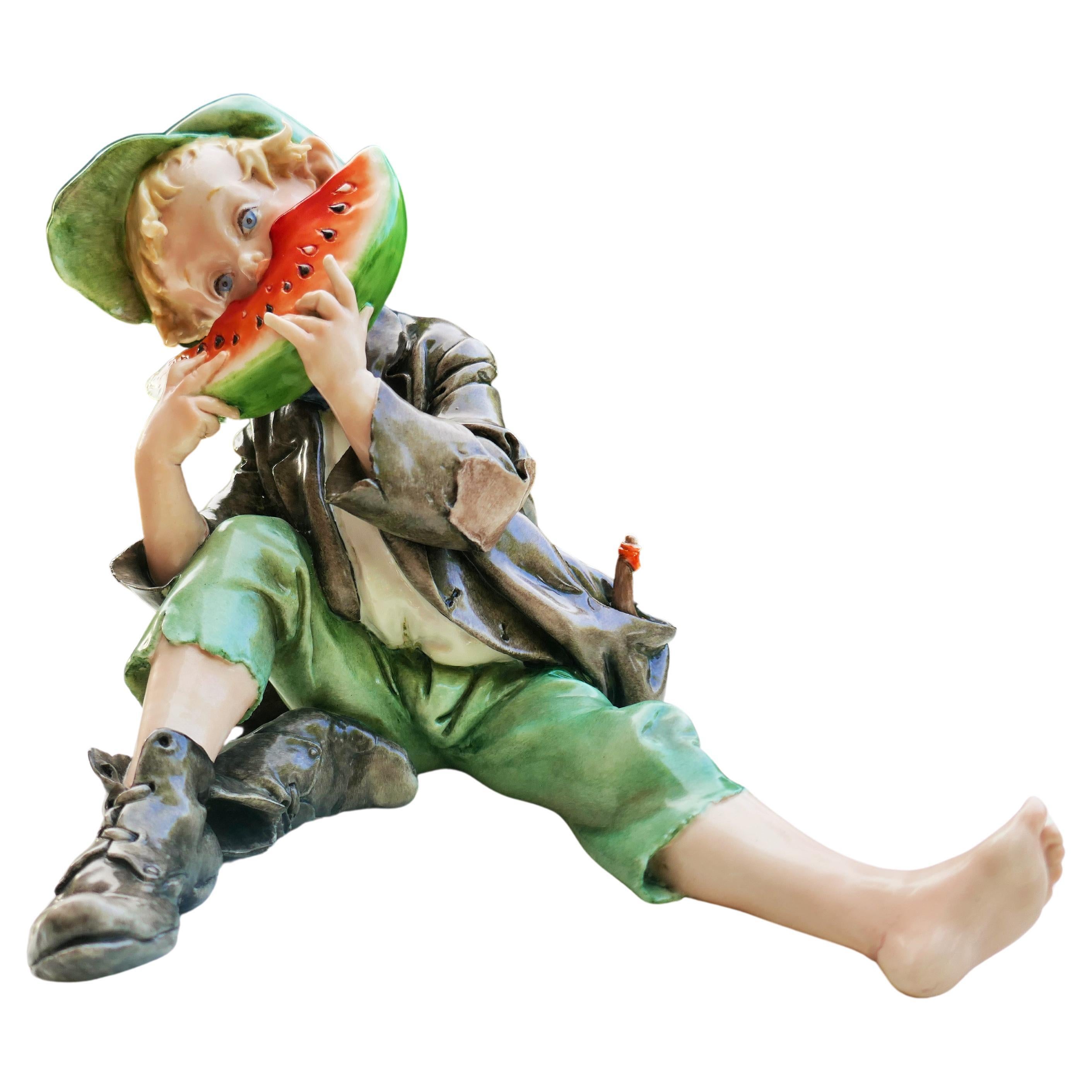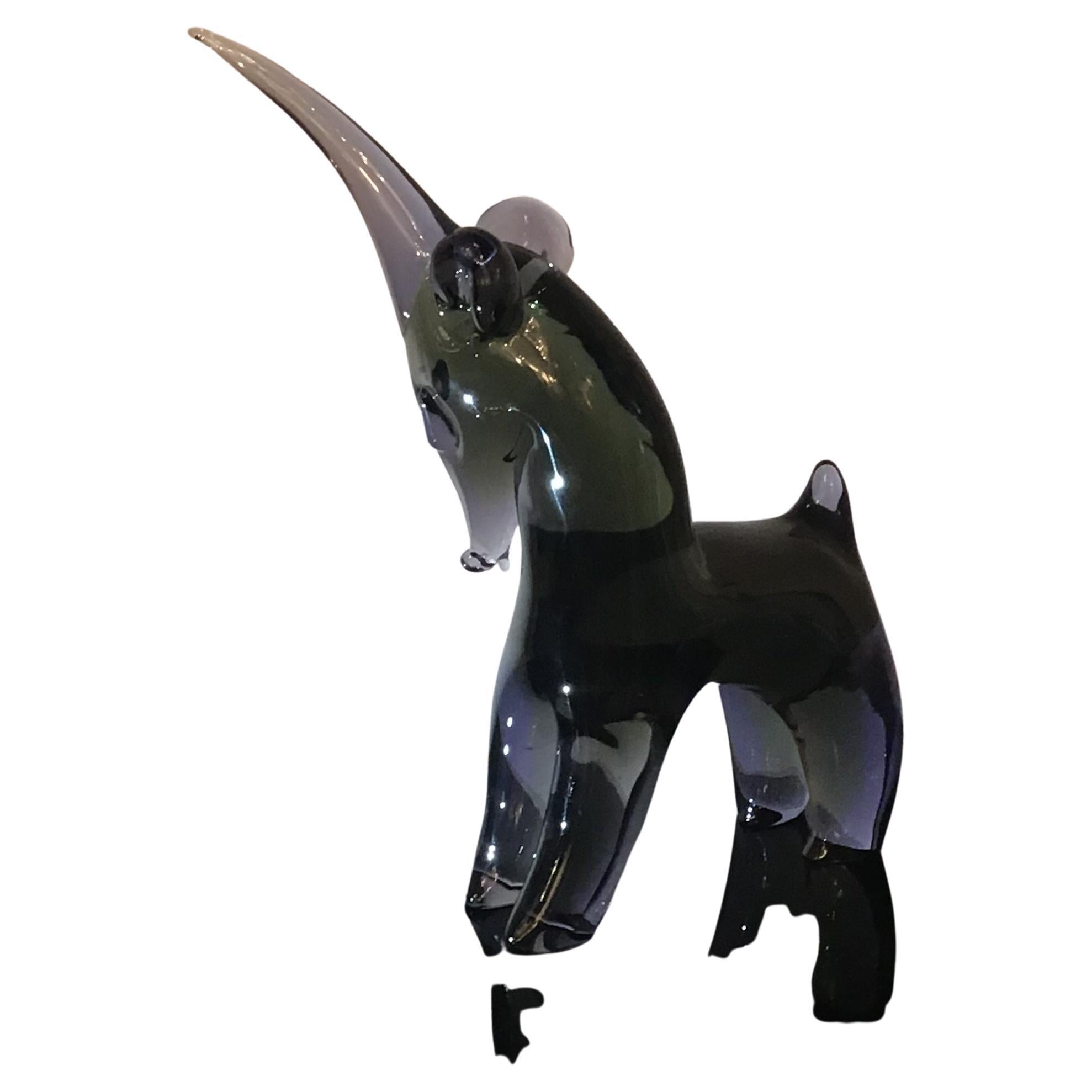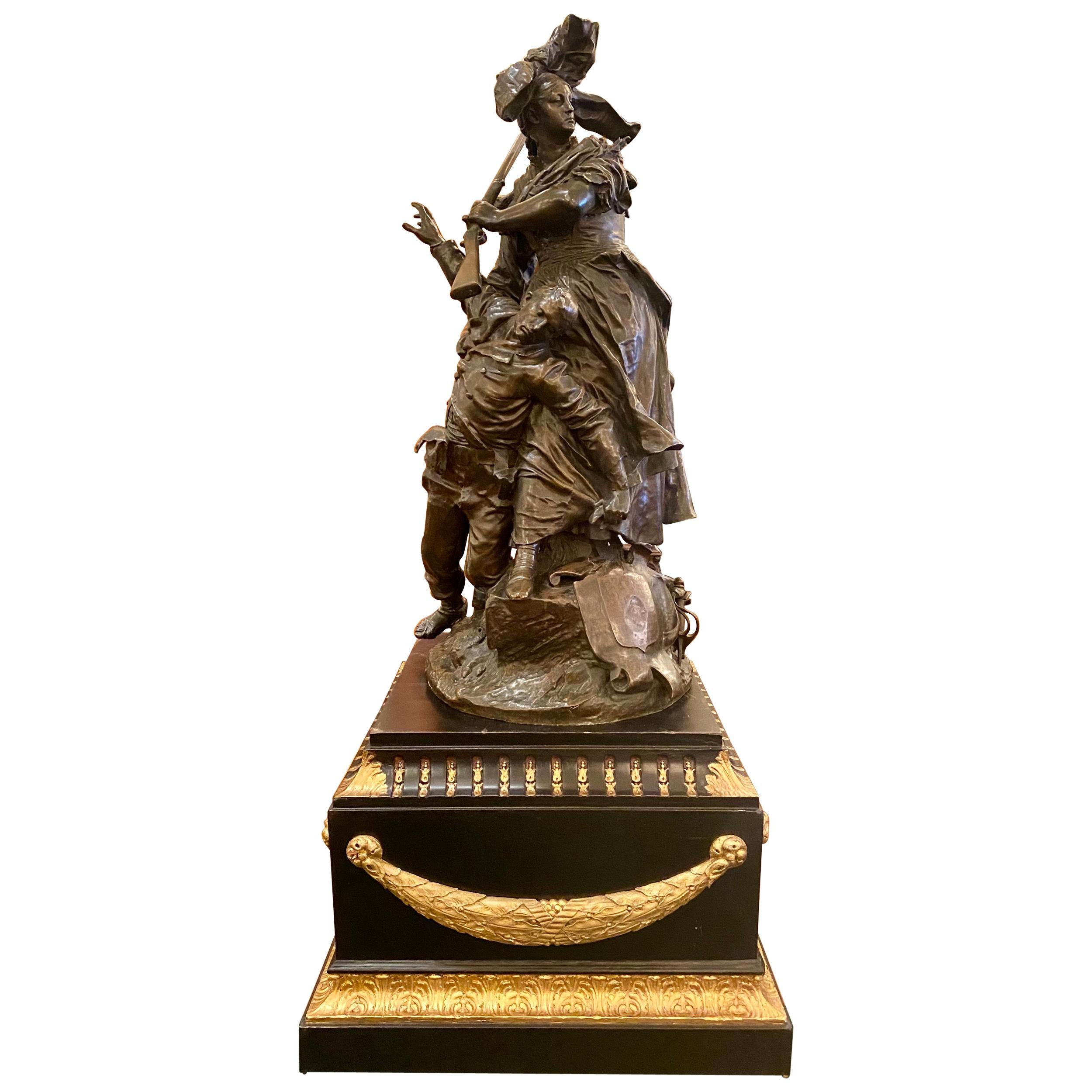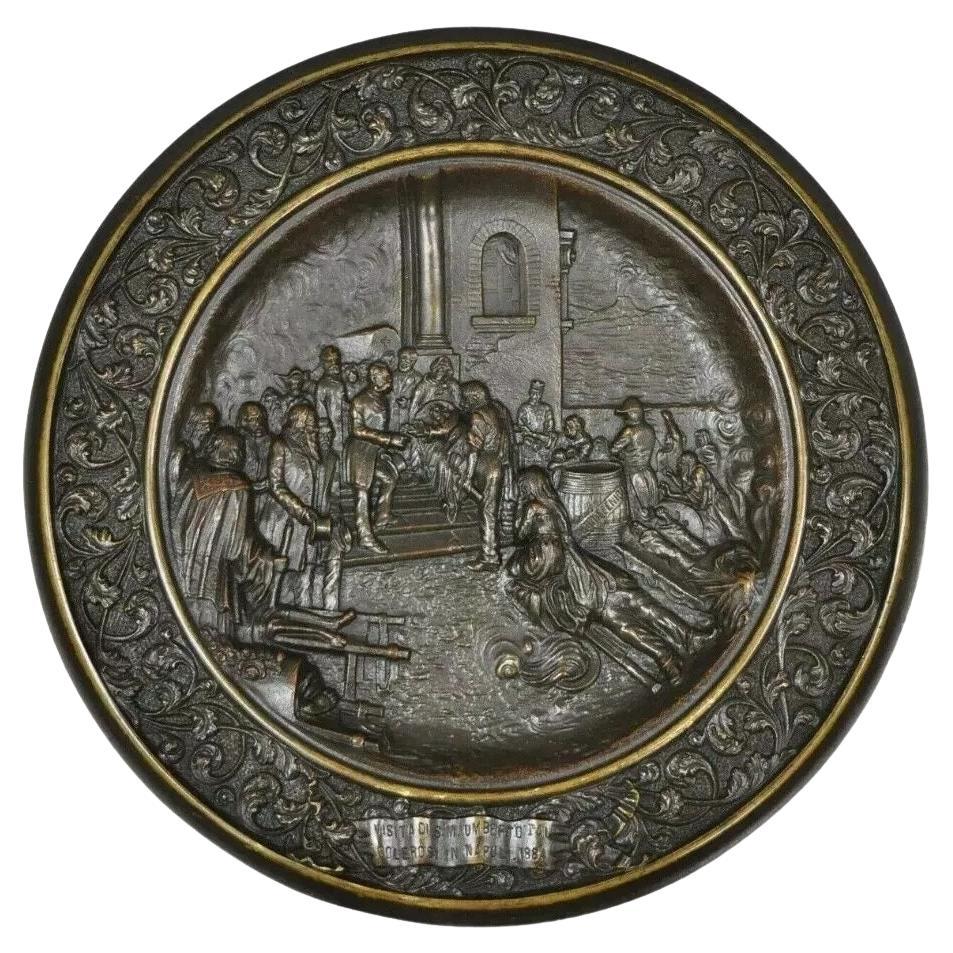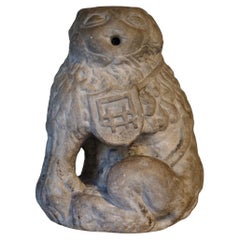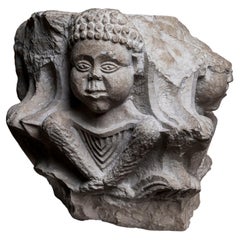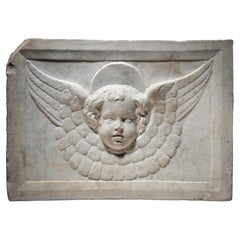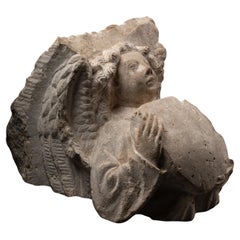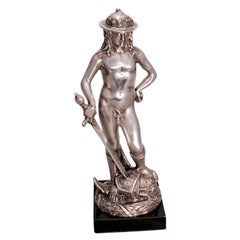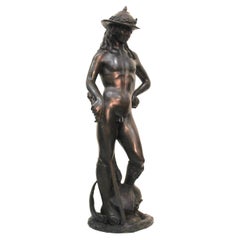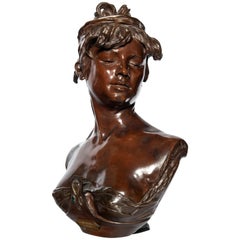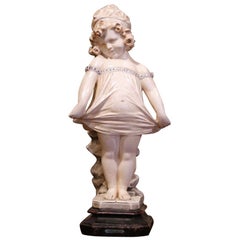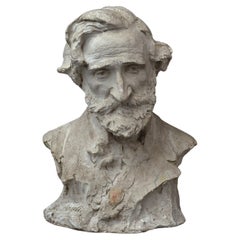
Donatello Gabrielli (1884-1955) - Giuseppe Verdi
View Similar Items
Want more images or videos?
Request additional images or videos from the seller
1 of 6
Donatello Gabrielli (1884-1955) - Giuseppe Verdi
About the Item
- Dimensions:Height: 18.12 in (46 cm)Width: 11.82 in (30 cm)Depth: 13.78 in (35 cm)
- Style:Art Nouveau (Of the Period)
- Materials and Techniques:
- Place of Origin:
- Period:
- Date of Manufacture:20th century
- Condition:Wear consistent with age and use.
- Seller Location:Bruxelles, BE
- Reference Number:1stDibs: LU6666236515412
About the Seller
5.0
Vetted Professional Seller
Every seller passes strict standards for authenticity and reliability
1stDibs seller since 2022
15 sales on 1stDibs
Authenticity Guarantee
In the unlikely event there’s an issue with an item’s authenticity, contact us within 1 year for a full refund. DetailsMoney-Back Guarantee
If your item is not as described, is damaged in transit, or does not arrive, contact us within 7 days for a full refund. Details24-Hour Cancellation
You have a 24-hour grace period in which to reconsider your purchase, with no questions asked.Vetted Professional Sellers
Our world-class sellers must adhere to strict standards for service and quality, maintaining the integrity of our listings.Price-Match Guarantee
If you find that a seller listed the same item for a lower price elsewhere, we’ll match it.Trusted Global Delivery
Our best-in-class carrier network provides specialized shipping options worldwide, including custom delivery.More From This Seller
View AllMarble Lion, Périgord, 17th Century
Located in Bruxelles, BE
Marble lion
white marble
France, probably Périgord, 17th century
Small marble lion wearing a coat of arms pendant with the engraved date, ...
Category
Antique 17th Century French Renaissance Animal Sculptures
Materials
Marble
$4,768 Sale Price
25% Off
Rare Romanesque Capital Depicting Four Africans, Apulia, 13th Century
Located in Bruxelles, BE
Large stone capital carved on each side in strong relief. The basket is covered with two crowns of vertical acanthus leaves which sprout from the astragal and fill the space between ...
Category
Antique 15th Century and Earlier Italian Medieval Architectural Elements
Materials
Stone
$21,269 Sale Price
20% Off
Cercle of Jacopo della Pila - Marble relief depicting a winged Cherub
Located in Bruxelles, BE
Cercle of Jacopo della Pila (Lombard, in Naples 1471-1502)
Marble relief depicting a winged Cherub
Naples, second half of15th century
40 x 57 x 12 cm
Exquisitely carved, this relief portrays a winged cherub with cascading hair and delicate features. The cherub's plump, smooth countenance, rounded cheeks, outlined lips, and finely drawn nose emanate a sense of tenderness. The quadrangular module, is adorned with a carved frame. The relief ascends gradually, transitioning from the low relief of the wings to the high relief of the head.
The rectangular frame and the subtly curved form of the artwork suggest that the relief likely adorned the upper part of an arch or a vaulted chapel. The type is that of the perspective room with a coffered ceiling decorated with figures of winged cherubs, which is found in various Neapolitan chapels of the 15th century. Coffered ceilings attest to the recovery of antiquity and the search for luxury in Renaissance architecture, first in Florence, then in Rome and Naples. The majority of the numerous family chapels and tombs built during the late fifteenth century in south of Italy employ the new formal vocabulary of the Florentine Renaissance in a self-confident manner that permitted a broad spectrum of variations.
The escalating admiration for the classical world, coupled with the development of perspective, significantly contributed to the Renaissance endorsement of coffered ceilings. This artistic and constructive device drew inspiration from the intricate marble patterns observed in historical landmarks such as the Arch of Titus, the Temple of Vesta in Tivoli, the Pantheon, and the Basilica of Maxentius. A distilled product of both mathematical and artistic cultures, deeply scrutinizing the ancient world, the coffered ceiling plays a vital role in the perspective construction of space with its regular and directional geometry. The motif of the coffered ceiling decorated with cherubs in relief was introduced in Naples by Francesco Laurana in the plastic decoration of the Arch of Castelnuovo. Laurana's impact on the art scene in the south of Italy was profound. The introduction of the winged cherub into the region's artistic vocabulary bridged the gap between the classical and the contemporary, creating a synthesis that resonated with both aesthetic and spiritual sensibilities. His influence extended beyond the immediate visual appeal, shaping the cultural identity of the Renaissance in southern Italy. Although the plastic decoration of the Arch of Castelnuovo cannot certainly be ascribed to a mature Renaissance style, it was precisely on this occasion that the sculptors who worked there could get to know and export throughout the Italian peninsula that type of "Florentine classicism" which, even in the 15th century Naples, was conditioned by the Burgundian culture imported into the Kingdom by Alfonso of Aragon himself, with artists called from Spain and Northern Europe. The coffered ceiling, with its geometric patterns and Laurana's winged cherubs nestled within, became a symbol of refinement and cultural sophistication. The relief sculptures, carefully integrated into the overall design, transformed the ceiling into a celestial realm, inviting viewers to contemplate the divine while immersed in the grandeur of the Renaissance space.
Similar winged cherubs appears also in the Naples cathedral. Within the renowned Succorpo Chapel, a mesmerizing marble coffered ceiling adorned with cherubs epitomizes the splendor of the Neapolitan Renaissance. The interplay of light and shadow on the textured surface of the marble coffered ceiling introduces an ethereal dimension, providing an immersive visual experience for observers. The geometric precision and the repeated patterns, reminiscent of classical motifs, establish a sense of harmony and balance that has become the hallmark of the Neapolitan interpretation of Florentine Renaissance aesthetics.
Although probably intended to be admired from a distance, this cherub is intricately detailed and exquisitely rendered: the face and hair are elegantly outlined and the feathers are textured through juxtaposed lines. The marble, both figurative and decorative, adheres to the principles of balance and restrained ornamentation typical of the « Florentine Classicism ». Harmonious shapes and gracefully orchestrated curves , rooted in the classical repertoire, converge to evoke a sense of ethereal beauty. The surface displays the masterful use of a chisel to intricately carve the feathers and facial features, creating an almost abstract quality.
This work is a testament to a sculptor of great skill and rich figurative knowledge, seamlessly blending classical firmness in contours with a refined treatment of the marble's surface. The combination of tradition and innovation point to a stylistic idiom from Lombardy, in particular we can find some comparaisons with the works of Jacopo della Pila, sculptor of Lombard origin working in Naples in the second half of the 15th century. He is documented there between 1471 and 1502, and is a protagonist of the Aragon Renaissance in the second half of the Quattrocento, together with the other great Northern sculptor active in the kingdom, Domenico Gagini.
the first commission he received dates back to August 9, 1471, when Jacopo publicly committed to sculpting the funerary monument of Archbishop Nicola Piscicelli to be placed in the Cathedral of Salerno. The last known work is an altar ordered on July 29, 1502, by the noble Jacopo Rocco for the church of San Lorenzo Maggiore in Naples. Between these two chronological extremes (1471-1502), we must place the fervent activity of the artist, who had trained in Rome, perhaps under the guidance of Paolo Romano but also engaged in dialogue with other major artists of the city, especially Isaia da Pisa. He enriched his experience in Naples, initially drawing inspiration from the works of Domenico Gagini and later from the Tuscan masterpieces of Antonio Rossellino and Benedetto da Maiano destined for the church of Santa Maria di Monteoliveto. Jacopo della Pila's artistic personality is thus based on a complex interplay of influences, contributing to the definition of a highly personal style.
Close comparaison can be made between our cherub and the winged angels reliefs...
Category
Antique 15th Century and Earlier Italian Renaissance Figurative Sculptures
Materials
Marble
$22,193 Sale Price
20% Off
Corbel with an Angel Holding a Shield
- Burgundian Netherlands 15th century
Located in Bruxelles, BE
Corbel with an Angel Holding a Shield
Franco-Flemish, Burgundian Netherlands 15th century
Limestone
On a modern metal stand
H 21 x L 16,5 x P 18,5 cm
This finely carved stone corbel,...
Category
Antique 15th Century and Earlier Belgian Gothic Figurative Sculptures
Materials
Limestone
Venus Pudica (Medici-type) - 18th century, Italy
Located in Bruxelles, BE
Monumental sculpture representing the Venus Pudica (Medici-type)
18th Century
Italian (Rome)
White marble
Based on a model from Antiquity, the Medici Venus, currently in the Uffizi ...
Category
Antique Early 18th Century Italian Grand Tour Figurative Sculptures
Materials
Marble
Two rare Figures in Turkish Attire - Venice, early 17th century
Located in Bruxelles, BE
Rare Bronzes Depicting two Figures in Turkish Attire
Possibly Suleiman the Magnificent at two different ages
bronzes, alabaster bases
Venice, early 17th century
19,5 x 6 x 5 cm
These two rare bronze statuettes represent two figures dressed in elaborate "Turkish" attire. They are mounted on alabaster bases with bronze reliefs—one featuring the winged lion of Venice, and the other possibly symbolizing Turkey with a wolf depiction.
One figure wears a grand külah, a spherical turban with a cone top, signifying royal authority, while the other has a wrapped turban, denoting rank and religious identity. Their garments are richly detailed with intricate engravings, suggesting luxurious fabrics of the Ottoman court.
The statuettes may represent Suleiman the Magnificent at two different stages of life, as both young and old. The sultan depicted alongside the winged lion corresponds to a description from a Venetian delegate in 1534, when Suleiman was 43. At that time, he had conquered Iraq from the Safavids and achieved a decisive victory over the Papal fleet at the Battle of Preveza. He was described as having large eyes, an aquiline nose, and long red mustaches—traits visible in Cristofano dell'Altissimo’s portrait of Suleiman in the Uffizi Gallery in Florence.
Unlike Mehmed II, who commissioned portraits by European artists for diplomatic purposes, Suleiman did not directly order such representations. Instead, his likeness spread through works by artists like Albrecht Dürer, based on sketches made by diplomats. Following his capture of Belgrade in 1521, his victory over Hungary in 1526, and his siege of Vienna...
Category
Antique 17th Century Italian Renaissance Figurative Sculptures
Materials
Alabaster, Bronze
You May Also Like
Silver Sculpture Statue of David After Donatello
Located in New York, NY
The statue of the Biblical figure, David, is considered to be one of Donatello's landmark works and a milestone in the Italian Renaissance. This statue is entirely made of silver dep...
Category
20th Century Italian Renaissance Sterling Silver
Materials
Silver
David del Donatello sculpture in bronze
Located in Rome, IT
David del Donatello sculpture in bronze. ADDITIONAL PHOTOS, INFORMATION OF THE LOT AND QUOTE FOR SHIPPING COST CAN BE REQUEST BY SENDING AN EMAIL. ULTERIORI FOTO, INFORMAZIONI SUL LO...
Category
20th Century Unknown Figurative Sculptures
Materials
Bronze
$4,253 Sale Price
20% Off
Cast Bronze Woman Bust "Bohême Orientale" Signed R. Colombo, Paris, 1884
By Renzo Colombo
Located in Buenos Aires, Buenos Aires
Cast bronze woman bust "Bohême Orientale" signed R. Colombo, Paris, 1884.
(Renzo Colombo 1856-1885).
Bronze plaque at front "Bohême Orientale par Colombo".
Category
Antique 1880s French Art Nouveau Busts
Materials
Bronze
$12,000 Sale Price
20% Off
19th Century French Handcrafted Plaster Young Girl Statue After Donatello
Located in Dallas, TX
Decorate a shelf or a pedestal top with this whimsical antique sculpture, created in France circa 1880 and handcrafted of plaster, the figure depicts a young girl standing up, and sh...
Category
Antique Late 19th Century French Figurative Sculptures
Materials
Plaster
Amedeo Clemente Modigliani '1884–1920' d´après, Large Bronze Sculpture
Located in Copenhagen, DK
Amedeo Clemente Modigliani (1884–1920) d´après.
"Tête de jeune femme". Large bronze sculpture in solid bronze on a green marble base.
Bronze fo...
Category
Late 20th Century Spanish Modern Busts
Materials
Marble, Bronze
$16,000 Sale Price
20% Off
Auguste Rodin Replica L'eternal Printemps 'Eternal Springtime', 1884
By Auguste Rodin
Located in Dallas, TX
This is a bronze statue Auguste Rodin Eternal Springtime reproduction. It is based on the couple, Paolo and Francesca, the passionate lovers from the fifth canto of Dante's Inferno. ...
Category
Antique Late 19th Century Romantic Figurative Sculptures
Materials
Bronze
$20,000 Sale Price
20% Off
Recently Viewed
View AllMore Ways To Browse
Giuseppe Verdi
Antinous Osiris
Antique Alabaster Figurine
Antique Bisque Piano Baby Figurines
Antique Bronze Ganesh
Antique Buddah
Antique Horse Sleigh Bells
Antique Royal Worcester Figurines
Ares And Venus
Art Deco Bronze Woman With Dogs
Auguste Moreau On Sale
Austin Prod Inc
Austin Productions Sun
Austin Sculpture Lovers
Bergman Bronze Pray
Bergmann Chair
Bisque Piano Babies
Blind Justice
